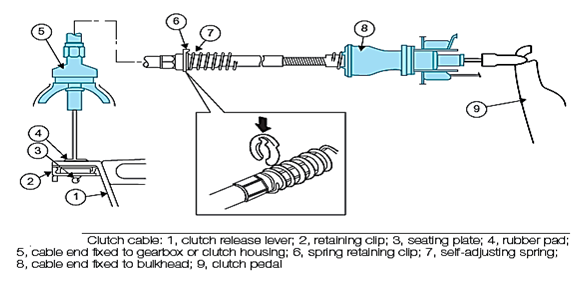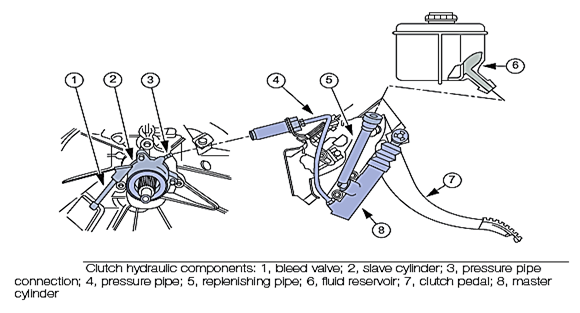←
Automobile Engineering
Clutch Operation
Introduction:
A clutch is a device for disconnecting and connecting rotating shafts. The exact location of the clutch varies with vehicle design. An electronic clutch was developed for racing vehicles to improve the getaway performance.
Operation of the clutch:

- In a vehicle with a manual gearbox, the driver pushes down the clutch when changing gear, thus disconnecting the engine from the gearbox. It allows a temporary neutral position for gear changes and also a gradual way of taking up drive from rest.
- The exact location of the clutch varies with vehicle design. However, the clutch is always fitted between the engine and the transmission.
- With few exceptions, the clutch and flywheel are bolted to the rear of the engine crankshaft. The driver operates the clutch by pushing down a pedal.
- This movement has to be transferred to the release mechanism.
- The two main methods used are cable and hydraulic. The cable method is the most common. Electrohydraulic or electric clutch operation is used on direct shift gearboxes (DSGs). A steel cable, which runs inside a plastic-coated steel tube, is used on most cars.
- The cable ‘outer’ must be fixed at each end. The cable ‘inner’ transfers the movement. One problem with cable clutches is that movement of the engine, with respect to the vehicle body, can cause the length to change. This results in a judder when the clutch is used.
- This problem has been almost eliminated by careful positioning and quality engine mountings.
- This clutch cable works on a simple lever principle.

- The clutch pedal is the first lever. Movement is transferred from the pedal to the second lever, which is the release fork. The fork, in turn, moves the release bearing to operate the clutch
HYDRAULIC MECHANISM

A hydraulic mechanism involves two cylinders. These are termed the master and slave cylinders. The master cylinder is connected to the clutch pedal. The slave cylinder is connected to the release lever. The clutch pedal moves the master cylinder piston. This pushes fluid through a pipe, which in turn forces a piston out of the slave cylinder. The movement ratio can be set by the cylinder diameters and the lever ratios.
